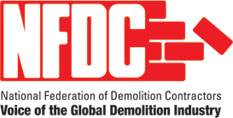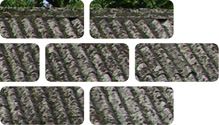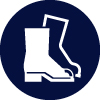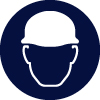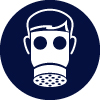
Asbestos Cement Products Hazardous 17 06 05
All asbestos cement cladding products are absolute hazardous waste and must be consigned as hazardous (or special) waste. Asbestos cement cladding products are made from a mixture of fibrous asbestos and cement that is compressed and dried into a range of construction products, including corrugated sheets, flues, downpipes, guttering, barge boards, fascia boards and ridge sheets. Asbestos cement cladding products were made in various sizes and designs depending on the desired performance and architectural style. Always refer to the Asbestos survey as some Fascias and soffits may contain AIB.
Usage & Probable Locations
Asbestos cement cladding products have been used to prevent fire or heat transmitting between materials and to sustain main frame structural integrity during fire. They were mass produced as cheap roof and cladding sheets and boards. They are commonly found in industrial and agricultural buildings, barns, sheds and garages fixed to portal frames, walls, roof trusses, panel systems, lift shafts and service routes.
Personal Protective Equipment
PPE requirements indicated are for guidance purposes only. DRIDS has identified the PPE that is mandatory on all demolition projects and ones that may be required subject to site specific Risk Assessment & Method Statement (RAMS). Hover over the icon to determine the types of PPE required for the removal of this material.
Removal, Segregation & Storage
Asbestos cement cladding products should only be removed by competent contractors. They are to be carefully deconstructed, segregated and stored safely according to strict guidelines and protocols. They should be removed from site as quickly as possible and always with the appropriate paperwork. Do not grind or disc cut sheets. Broken cement products from works such as fire damage clearance may be deemed NNLW always refer to the site specific RAMS for confirmation.
Tools
Fixtures, Fittings & Connections
Asbestos cement cladding products are commonly fixed in place with brackets, hoops, nails, drive nails, hook bolts, screws, wooden plugs, nuts and bolts, metal straps, mortar, screed, putty, mastic or other binding agent. Some asbestos cement products required no fixings, they were placed between other sheet materials in panel systems, doors and floors. Asbestos cement guttering and downpipes were sealed at the joint or collar with bitumen, putty or mastic.
Health & Safety
Subject to task-specific Risk Assessment & Method Statement (RAMS). Only remove asbestos cladding cement products if appropriately trained, or use specialist contractors. Wear gloves and respiratory protective equipment when handling asbestos cement cladding products to prevent inhalation, irritation, cuts and abrasion. Use eye protection when using hand tools. Limit hand, arm and whole body vibration when using impact tools. Use appropriate access and protective equipment determined by RAMS.
